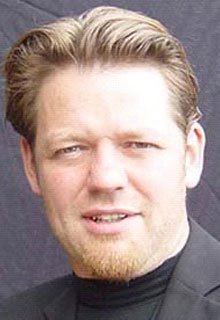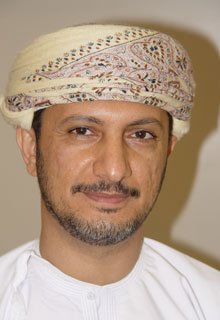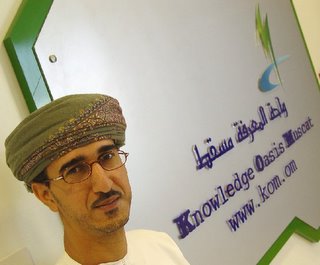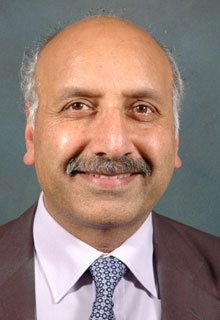 PEIE Mirror (PM) sat down with Colum Menzies Lowe, the NHS National Patient Agency's Head of Design and Human Factors and speaker at PEIE's Smart Manufacturing Conference, 23 - 24 January 2006, Muscat Inter-Continental Hotel.
PEIE Mirror (PM) sat down with Colum Menzies Lowe, the NHS National Patient Agency's Head of Design and Human Factors and speaker at PEIE's Smart Manufacturing Conference, 23 - 24 January 2006, Muscat Inter-Continental Hotel.PM: Can you give our readers sime background information on who you are and what you do?
In 1989 I graduated from Chelsea School of Art where I studied 3D Product Design. I ran my own design practice for a year before moving on to work for BLDC Retail Design from 1990 to1999, working with clients such as the Body Shop, Tesco, Butlers and Kilkenny. In 1999 I added an MBA in Design Management from University of Westminster to my academic credits.
After the BLDC I spent two and a half years as Head of Design at J. Sainsbury’s Homebase Ltd and just over a year as a Partner of Plan Créatif/Crabtree Hall Design Consultants before taking up my current position in November of 2003 at the NHS National Patient Safety Agency’s where I am Head of Design and Human Factors. My current role is as a vocal advocate for the better understanding and adoption of design in healthcare, especially as it relates to patient safety.
PM: Good design starts a good conversation. Is this an accurate statement?
I’m not sure I agree with this statement, certain products such as the iPod produce a lot of passionate support and debate and are always the subject of discussion but most good design remains invisible to the user, which is as it should be. For example the design of the London Tube map which goes about doing its job of communicating the very complicated without anybody actually noticing or appreciating it, good old Harry Beck.
PM: Everywhere you look today - from buildings and landscapes, to commercial products and public services, to Websites and print products - design has taken on new meaning. Design isn't just about decoration; it's a critical component of how we communicate, collaborate and compete. But behind the "look and feel" of any good design are a host of carefully conceived principles: fundamental propositions that define the essence of the design. How challenging is it to get this type of concept/mindset across to manufacturers?
As part of the Design Council’s manufacturing campaign and my role at the NHS I find myself having to define design on nearly a daily basis and it really isn’t that difficult, the difficulty lies in persuading manufacturers to part with a percentage of their profits today for the chance of greater returns in the future, it’s all about managing their risk.
PM: Do you believe that a good design should reflect a sense of human history - some aspect of where we've come from?
No. Good design fulfils a brief, it really is that simple. If the brief calls for ‘human history’ to be part of the aesthetic (although this is a very superficial way to look at design) then it should be considered in the design process but I would imagine in the main it is very rarely relevant.
PM: The success of a design has as much to do with its physical structure as with the emotion that it evokes. What are your thoughts on this?
It depends entirely on what the actual success criteria are. In my current role success equates to a reduction in accidental death and harm to patients, in most of my previous roles it is with the increase of profits, words such as physical structure and emotion are only relevant if they lead you to the ultimate success criteria, to talk about them in isolation is rather naive, almost as if design and art were somehow closely related, which they are not.
PM: In 1943, Charles and Ray Eames designed a leg splint for the Navy that kept an injured leg stable during transport. The splint was elegant, simple and functional, and it solved a problem in a way that worked for everybody. One of the most important things about that object is that when you see it, you immediately know what it is. The design makes it instantly recognizable. In your opinion, do manufacturers too often confuse design with marketability?
It strikes me that a leg splint has no need to be beautiful and elegant and as such every second and every penny spent trying to achieve this is a waste of the client’s money, reduces the products long term chance of being commercially viable and smacks of the designers building monuments for themselves rather than fulfilling the clients stated needs. It being unthreatening, simple and intuitive sound like useful product benefits given the probable situation of use.
Manufacturers are famous for confusing sales with marketing however, manufacturing a product and then putting all the effort into selling it to a rather reluctant and unreceptive audience rather than producing a product that people want and then simply giving them the opportunity to buy it. Maybe you’re referring to the Raymond Loewe school, of design, “ugliness doesn’t sell” he famously once said, and he was probably right. Obviously there is more to design than pure aesthetics but sometimes pure aesthetics is all that is wrong with a product …. sometimes.
PM: The days of the solo designer independently creating an artifact or an experience are gone. The world is too complex. Taking an idea to its ultimate expression requires the effort of the entire team - a multidisciplinary effort, where do you fit into this multidisciplinary effort?
I’m not sure I agree that the days of the solo designer have gone, Philipe Starck still seems to be doing very well for himself as do any number of design ‘gurus’. They are still part of a team, but then they always have been, you would have to go back to well before the industrial revolution to find the designer craftsman model in full swing and even today there are many ceremicists, jewellery makers etc working in what could only be described as a cottage industry. In fact this type of design is the newest trend in Japan, consumers positively hunting out the one-off, the personal and individual, rebelling against the mass produced model.
In a standard manufacturing scenario design is part of everything for one reason only; the designer is the consumer champion. If you are producing a product for a consumer then their views must be represented at every stage of the process.
PM: Every now and then, a design comes along that radically changes the way we think about a particular object – what design radically changed your way of thinking?
The digital watch, it made me realize that looking at the numbers 3 4 3 was not half as rewarding or intuitive as two hands and a face that allowed you to understand instantly that it was nearly a quarter to four. I’ve also always thought that the disposable lighter is nothing like as clever as a little stick with some phosphorous on the end (and you can get 40 of them for 50 baizas), environmentally better too, probably. I’m not going to discuss the obvious iPod, Walkman, Fax machine, Windows software, mobile phone etc).
PM: How do you integrate style and technology?
In almost all cases technology should be invisible to the consumer, after all they’re not interested in the ones and noughts in their computer, or the friction ratios of anti-lock brake systems, they want the service that the technology provides, not the technology itself. The barrier to accessing this service is usually a poor human machine interface. So, if the technology is invisible you can have any style you want, as long as it’s black!
PM: How can you make an impersonal machine into a personal tool?
You can’t, it’s a machine! All you can hope to do is provide a canvas whereby a consumer can project human characteristics on to an inanimate object thereby giving it perceived emotional qualities, stupid really but we all do it.
PM: How can designers create new value from an old standard?
By being more and more in tune with consumer requirements and thereby making the old standard product/service more and more appropriate. And just when you think you’ve gone and produced ‘new value’, consumer opinion swings and you have to start again.
PM: When designing a new product how do the following issues impact on what you do?
Emotion (the perceptual experience that a consumer has when using a product)
Aesthetics (a focus on sensory perception)
Product Identity (a statement about individuality and personality)
Impact (social or environmental effects)
Ergonomics (a product's basic usability)
Core Technology (the ability to function properly and perform to expectations)
Quality (the durability, precision, and accuracy)
Rather obviously they all, and many others, have impact and have to be considered and their relative benefits to the project assessed, some can then be virtually ignored while others will take on more significance. This balancing or juggling act is just part of the design process.










